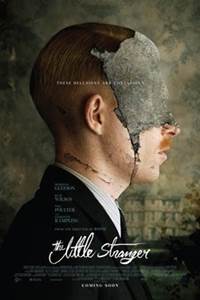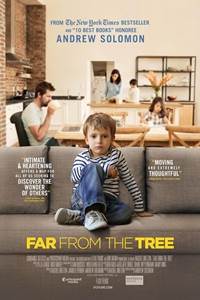‘Crazy Rich Asians’ offers a wealth of fun but the script needed a tighter budget
Directed by: Jon M. Chu
Written by: Peter Chiarelli and Adele Lim, based on the novel by Kevin Kwan
Starring: Constance Wu, Henry Golding, Michelle Yeoh, Gemma Chan, Lisa Lu, Awkwafina, and Ken Jeong
“Crazy Rich Asians” – Singapore is a wondrous place. Located just one degree above the equator in Southeast Asia, this small island city-state (only 31 miles by 17 miles) bustles as a massive business hub and hosts over five million residents. Malay is Singapore’s single national language, but the country proudly boasts three additional official ones: English, Mandarin and Tamil. The multi-lingual culture is no accident, because the island’s gorgeous, tropical beauty, towering skyscrapers and commercial importance are universal attractions.
In director Jon M. Chu’s film, he wholly and beautifully captures Singapore and all three of the said qualities in a splashy, two-hour romcom based on Kevin Kwan’s 2013 novel, about an American woman visiting her boyfriend’s family in the Lion City for the first time.
This particular critic enjoyed two astonishing visits to Singapore about 18 years ago, so on a personal note, I hope that this film will inspire moviegoers to travel to this incredible place. If one can brave – and afford - a 17-hour flight from Los Angeles and appreciate year-round 90-degree highs, many emotional and visual riches await.
Chu conveys several emotional highs and visuals throughout his picture and some terrific supporting characters amp up the humor to keep pace with the setting, but several puzzling script choices partially derail the narrative and ruin the movie’s chance at enjoying a cinematic triumph.
Well, Rachel (Constance Wu) and Nick (Henry Golding) feel like their one-year-relationship is a blessed triumph. These two young professionals live in New York, treat each other respect, and one day, Nick invites Rachel to Singapore to celebrate his best friend Colin’s (Chris Pang) wedding. Rachel has never been to Nick’s home, so when the two arrive, she experiences the first-time wonders of Singapore, like most of the movie-audience. Chu wonderfully flaunts seafood flavors at a massive hawker (food market) center, soaring concrete towers (like the futuristic Marina Bay Sands Hotel), blue coves, and hot weather. In fact, Rachel’s bouncy, initial experiences might tempt audiences to remove their jackets in air-conditioned theatres, briefly step out to concession stands and ask for shrimp, noodles and hot sauce.
Rachel does not confront any friction at first, but the main rub revolves around Nick’s money. Actually, his family’s money. The Youngs are the wealthiest developers in Singapore, and like the film’s title says, they are crazy rich. Rich enough to buy a pair of 1.2 million dollar earrings during a random stop at a jewelry store.
The problem is that Nick’s mother Eleanor (Michelle Yeoh) and grandmother Ah Ma (Lisa Lu) have other plans for him, and they do not include Rachel. Sure, Rachel is a bright economics professor at NYU, but she comes from a single-mother household and does not possess the wealthy lineage that Eleanor and Ah Ma expect.
So, the film is constructed as a hopeful rags-to-riches princess story with Rachel learning about Nick’s other life and attempting to gain the Youngs’ acceptance.
Tall orders. Unfortunately, Nick isn’t much help.
After a year of dating, he never mentions that his family is loaded, because he enjoys that Rachel loves him as a person, not his money. One would think that after 365 days, his affluent home life might pop up once in conversation, but no. This unwittingly sets up Rachel to suddenly confront an overwhelming barrage of wealth and his family’s judgment, when they arrive in Singapore.
In short, he blindsides her.
Even worse, Nick does not offer much comfort, while Rachel copes with Eleanor’s attempts to make her feel unworthy and navigates through various locales filled with jealous women. The script keeps Nick and Rachel separated quite a bit during the second act, and assumingly, this is done so she can overcome the arranged hurdles on her own.
Nick, however, is supposed to be prince of sorts and is actually referred to as one. He mainly provides good looks, dignified talk and some “I love you” moments, but – sadly – he remains very clueless in protecting his girlfriend from the forces conspiring and siding up against her. Nick sometimes seems aloof, like Prince Edward (James Marsden) from “Enchanted”, and - spoiler alert – that particular 2007 movie-character does not get the girl at the end.
Screenwriters Peter Chiarelli and Adele Lim do not pen another protagonist, so Nick is it! He’s the only guy for Rachel, and at least for this critic, that begs the question: Does a romcom work if one roots for the featured couple to go their separate ways?
The film runs into other problems too. Here are a few. One of the most intriguing supporting characters is Nick’s cousin Astrid (Gemma Chan) from Shanghai. Astrid has beauty, panache, brains, and wealth (of course). She carries all the potential to work extremely well within her own story and as a close ally to Rachel, but Chu doesn’t give her much to do, other than deal with a troubled marriage. She becomes a victim of sorts, and the script does not offer any memorable Astrid-words-of-wisdom or notable moments, except purchasing the aforementioned diamond earrings. As far as Astrid’s husband Michael (Pierre Png), well, he oddly steps out of a steamy shower in his first scene. In retrospect, that may make sense, because Michael doesn’t add any conversational interest throughout the rest of the movie.
In another thread, Colin builds up plenty of negative interest against his chief antagonist Bernard (Jimmy O. Yang), a sophomoric bachelor party host, but his arc becomes lost sometime after he shoots flares with a bazooka. Don’t ask.
Feeling the need to rewrite some key characters and removing or puffing up specific subplots probably are not ingredients for a great romcom either. “Crazy Rich Asians” is supposed to be the first of a trilogy, so that may explain some script choices, but the film does not benefit as a two-hour, self-contained experience.
Having said that, Chu’s film also includes lots of pomp and circumstance, glitz, glamor, and fun. At times, it’s a dizzying Las Vegas act that also includes covers of “Money (That’s What I Want)” by Cheryl K and “Material Girl” by Sally Yeh.
Awkwafina, Ken Jeong and Nico Santos always seem to deliver laughs during every minute of their screen time, by playing Rachel’s friend Peik Lin, Peik Lin’s dad and Nick’s cousin Oliver, respectively. The film needed these three characters on-screen more often, and granting them bigger roles to further assist Rachel would have been very well-served.
“Crazy Rich Asians” does nicely serve Singapore and its princess storyline. The wonderful financial excesses are a blast to behold, and it is amazing that Chu and company made the movie – filmed in Singapore and Malaysia - for just 30 million dollars. Wow! But the script? Well, it needed a tighter budget.
(2.5/4 stars)
Jeff – a member of the Phoenix Critics Circle – has penned film reviews since 2008 and graduated from ASU’s Walter Cronkite School of Journalism. Follow Jeff and the Phoenix Film Festival on Twitter @MitchFilmCritic and @PhoenixFilmFest, respectively.





























